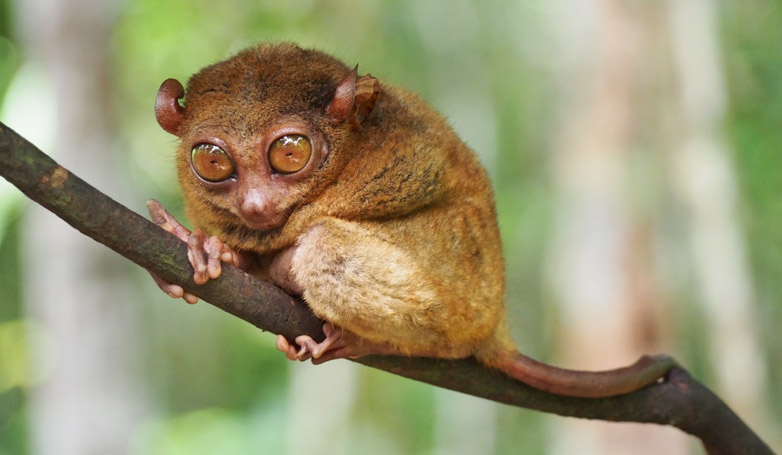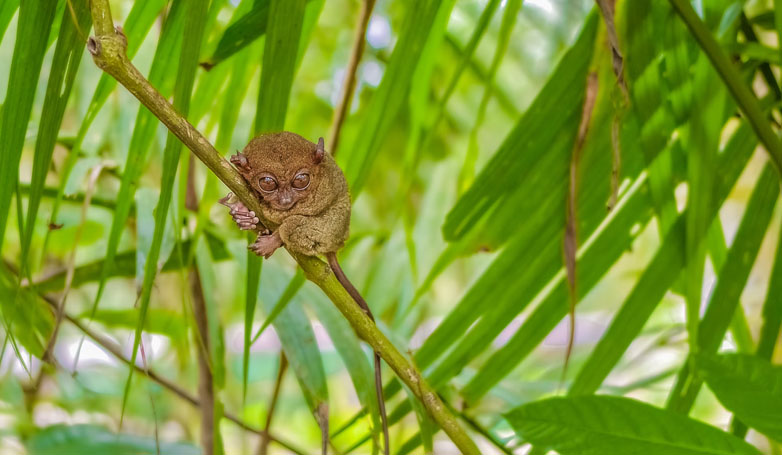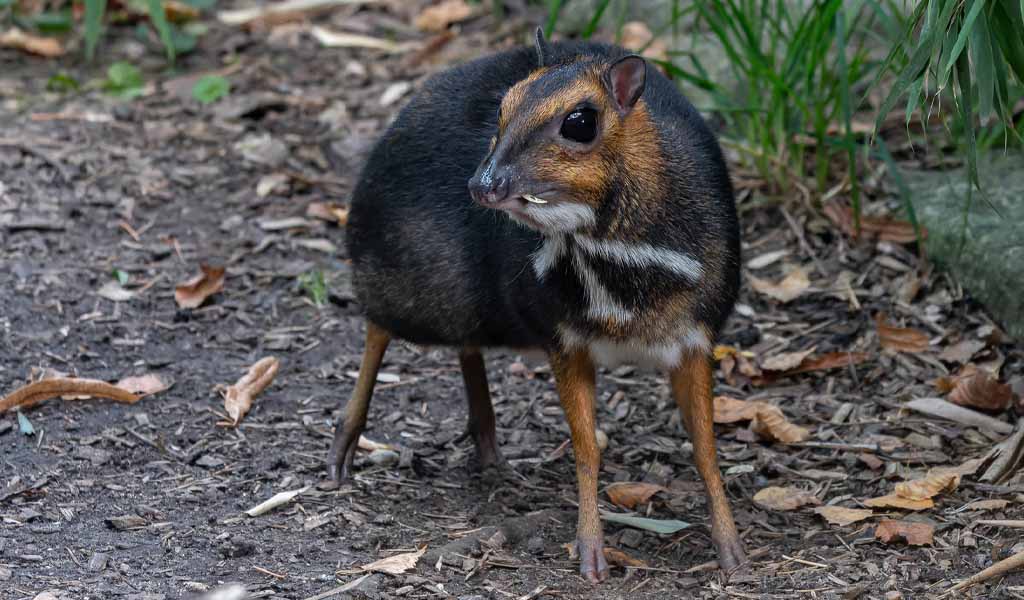Welcome to the World of the Philippine Tarsier!
In the lush, tropical forests of the Philippines resides a creature so fascinating, it seems straight out of a fairy tale. Meet the Philippine Tarsier – a pint-sized primate with oversized eyes, distinctive ears, and a remarkable ability to captivate anyone who crosses its path. In this article, we’ll delve into the intriguing world of these miniature marvels, uncovering their unique features, behaviors, and the conservation efforts aimed at protecting them. Get ready for a wild ride as we explore what makes the Philippine Tarsier one of nature’s most captivating creatures!
Meet the Philippine Tarsier – Nature’s Pocket-Sized Wonders

The Philippine Tarsier, known for its endearing appearance and unique features, is one of the smallest primates in the world, captivating the hearts of many with its charm. Found in the dense forests of the Philippines, particularly in Bohol, Leyte, Samar, and Mindanao, these small creatures are renowned for their large, round eyes, which are among the largest of any mammal in proportion to their body size. Their large eyes enable them to have excellent night vision, aiding in their nocturnal lifestyle.
Despite their small size, Philippine Tarsiers possess remarkable jumping abilities, able to leap distances of up to 5 meters from tree to tree. They are also known for their distinctive long, hairless tails, which are longer than their bodies and serve as a balancing tool as they move through the trees. These primates are primarily insectivores, feeding on insects such as crickets, beetles, and grasshoppers, which they catch with their agile hands. Due to habitat loss and illegal pet trade, the Philippine Tarsier is listed as near-threatened, highlighting the importance of conservation efforts to protect these unique and fascinating creatures for future generations to appreciate and admire.
The Enigmatic Eyes – Unlocking the Mystery Behind the Tarsier’s Gaze
Delving into the fascinating world of the Philippine Tarsier unveils a creature steeped in mystery and wonder. These enigmatic primates, with their wide-eyed gaze and nocturnal habits, have long intrigued scientists and nature enthusiasts alike. Their small size, coupled with their elusive nature, has made studying them a challenging yet rewarding endeavor.
One of the most intriguing aspects of the Philippine Tarsier is its unique adaptations. Despite their diminutive stature, they boast incredible leaping abilities, allowing them to navigate the dense foliage of their forest homes with ease. Their large, sensitive ears can swivel independently, helping them pinpoint the faintest sounds of their insect prey. Additionally, their eyes, which are fixed in their sockets and cannot move, are among the largest in the animal kingdom relative to body size, aiding in their nocturnal hunts.
Acrobats of the Forest – Unraveling the Tarsier’s Agile Lifestyle

The Philippine Tarsier, with its miniature frame and distinct features, offers a glimpse into the remarkable adaptations that have shaped its agile lifestyle. These small primates, found in the lush forests of the Philippines, have evolved unique characteristics that enable them to thrive in their challenging environment.
One of the key aspects of the tarsier’s lifestyle is its impressive leaping ability. Despite its size, the tarsier can leap incredible distances, moving swiftly from tree to tree in search of food. This agility is further enhanced by its long, slender limbs and specialized foot structure, which allow for precise and powerful movements.
Another fascinating aspect of the tarsier’s lifestyle is its diet. As nocturnal hunters, tarsiers primarily feed on insects, using their keen senses to locate and capture their prey. Their large eyes, which are fixed in their sockets, provide excellent night vision, while their sensitive ears can detect the faintest sounds of potential meals.
Vocal Virtuosos – Decoding the Tarsier’s Unique Calls
The Philippine Tarsier, renowned for its captivating appearance, also communicates through a fascinating array of vocalizations, offering insights into its behavior and social interactions. These tiny primates, found in the dense forests of the Philippines, use a variety of calls to convey different messages, ranging from warnings to mating calls.
One of the most distinctive calls of the tarsier is its high-pitched, repetitive chirping sound, often heard during the night. This vocalization is believed to serve as a territorial marker, helping tarsiers establish and maintain their boundaries. Additionally, tarsiers produce a range of other sounds, including clicks, squeaks, and whistles, each with its own meaning and purpose.
Studying these vocalizations is crucial to understanding the social dynamics of tarsier populations. Researchers have observed that tarsiers use vocalizations not only to communicate with each other but also to coordinate group activities, such as hunting. By decoding the tarsier’s unique calls, scientists can gain valuable insights into the complex and fascinating world of these small primates, shedding light on their behavior and ecology.
Conservation Challenges – Safeguarding the Future of the Philippine Tarsier

The Philippine Tarsier faces a multitude of conservation challenges that threaten its survival in the wild. Habitat loss and fragmentation due to deforestation are among the most pressing issues. As forests are cleared for agriculture, logging, and urban development, the tarsier’s natural habitat diminishes, leaving them with limited resources and space to thrive.
Another significant threat to the Philippine Tarsier is the illegal pet trade. Despite being protected by law, tarsiers are often captured and sold as exotic pets, both within the Philippines and internationally. This not only disrupts wild populations but also subjects captured tarsiers to poor living conditions and improper care.
Additionally, the tarsier’s reproductive rate is relatively slow, with females typically giving birth to only one offspring per year. This low reproductive rate makes it challenging for tarsier populations to recover from declines caused by habitat loss and illegal trade.
Conservation efforts are underway to protect the Philippine Tarsier and its habitat. These efforts include establishing protected areas, raising awareness about the importance of conservation, and implementing stricter enforcement of wildlife protection laws. By addressing these conservation challenges, we can help ensure a brighter future for the Philippine Tarsier and other endangered species.
Conclusion
As we bid adieu to the captivating world of the Philippine Tarsier, it’s clear that these diminutive creatures are much more than meets the eye. From their oversized peepers to their acrobatic antics and melodious calls, each aspect of their existence is a testament to the wonders of nature. While they may face challenges on their journey toward survival, with dedication, perseverance, and a dash of human kindness, we can ensure that the enchanting allure of the Philippine Tarsier continues to grace our forests for generations to come. Until next time, keep your eyes peeled and your ears tuned for the faint whispers of these tiny forest dwellers – for in their world, magic truly resides. Here is the additional species to explore The Endangered Philippine Tamaraw.
FAQs About The Philippine Tarsier
1. How big are Philippine Tarsiers?
Philippine Tarsiers are one of the smallest primates in the world, measuring about 3.3 to 6.3 inches (8.5 to 16 cm) in length, excluding the tail, which can be about twice as long as their body.
2. What do Philippine Tarsiers eat?
Philippine Tarsiers primarily feed on insects like crickets, beetles, and grasshoppers. They also eat small vertebrates like lizards and birds.
3. Where can Philippine Tarsiers be found?
Philippine Tarsiers are found in the southeastern part of the Philippines, particularly in the islands of Bohol, Samar, Leyte, and Mindanao.
4. How long do Philippine Tarsiers live?
In the wild, Philippine Tarsiers can live up to 12 years, while in captivity, they can live up to 24 years.
5. Can Philippine Tarsiers be kept as pets?
No, it is illegal to keep Philippine Tarsiers as pets due to their endangered status and specialized needs.







